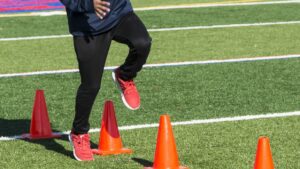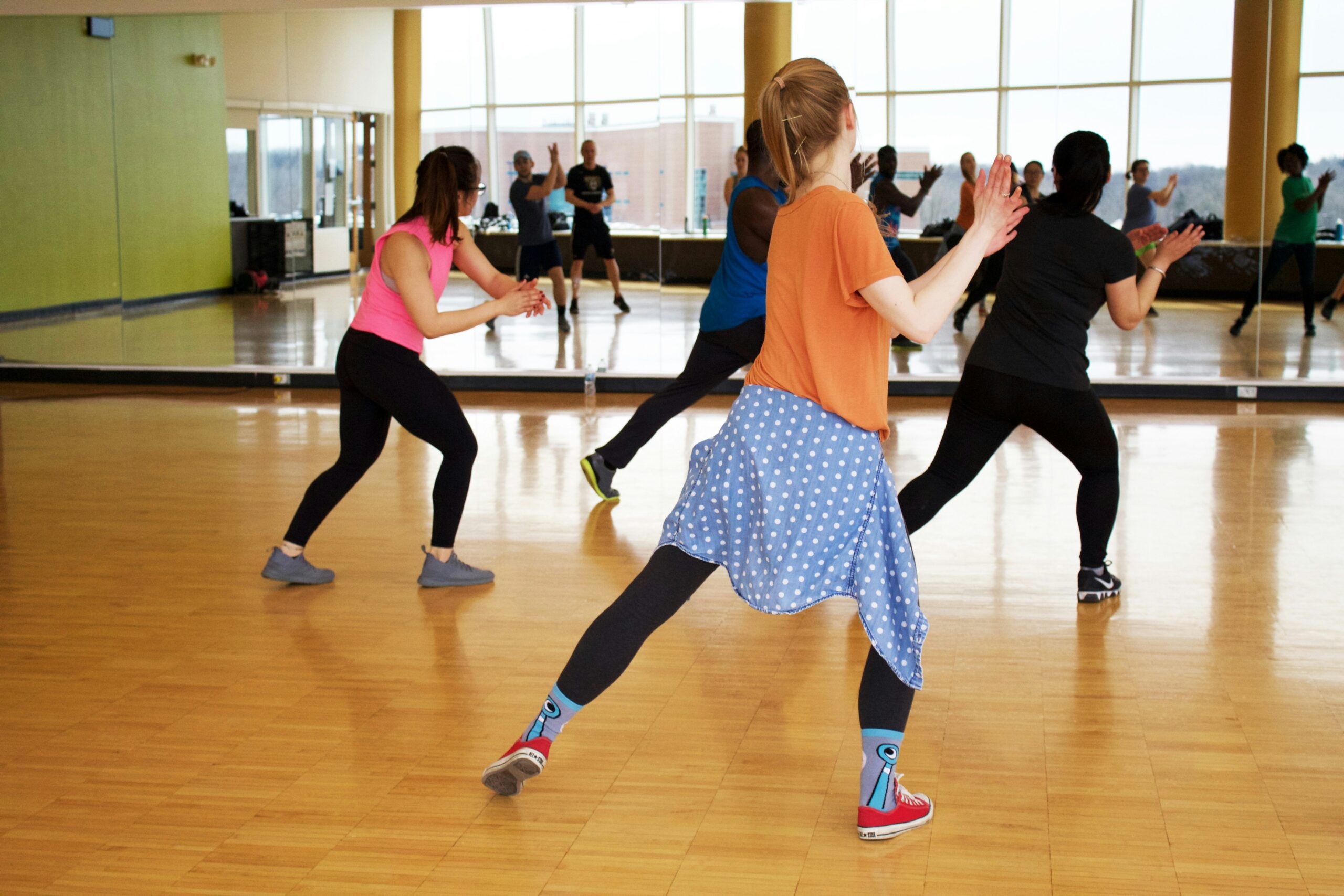Home Footballers Exercises is one of the key aspects of being a successful footballer that is having a strong core. A strong core not only helps with stability and balance but also improves overall body strength. One of Home Footballers Exercises that can be done at home to target the core is the plank. The plank is a simple yet effective exercise that engages multiple muscle groups, including the abs, back, and shoulders.
To perform a plank, start by getting into a push-up position. Instead of resting on your hands, lower yourself down onto your forearms. Your elbows should be directly beneath your shoulders. Engage your core muscles and maintain a straight line from your head to your heels. Hold this position for as long as you can, aiming for at least 30 seconds to start with. As you get stronger, you can gradually increase the duration of the plank.
In addition to the plank, there are other exercises that can be done at home to target different muscle groups. One such exercise is the squat. Squats are a compound exercise that work multiple muscles, including the quadriceps, hamstrings, and glutes. To perform a squat, stand with your feet shoulder-width apart. Lower your body down as if you were sitting back into a chair, keeping your chest up and your knees tracking over your toes. Push through your heels to return to the starting position.
Another great exercise for Home Footballers Exercises to do at home is the lunge. Lunges primarily target the quadriceps, hamstrings, and glutes, but also engage the core and improve balance. To perform a lunge, start by standing with your feet hip-width apart. Take a step forward with your right foot, bending both knees to lower your body down. Your front knee should be directly above your ankle, and your back knee should hover just above the ground. Push through your front heel to return to the starting position, and then repeat on the other side.
These are just a few examples of Home Footballers Exercises that footballers can do at home to improve their physical conditioning. Incorporating these exercises into a regular training routine can help maintain fitness levels and enhance performance on the field. Remember to always warm up before exercising and listen to your body to avoid injury. With dedication and consistency, home workouts can be just as effective as going to the gym.
1. Bodyweight Exercises: Home Footballers Exercises
Bodyweight exercises are a fantastic way to build strength and improve overall fitness without the need for any equipment. Here are a few bodyweight exercises that footballers can incorporate into their home workouts:
Push-ups
Push-ups are a classic exercise that targets the chest, shoulders, triceps, and core muscles. They can be modified to suit different fitness levels, making them suitable for beginners and advanced athletes alike. To perform a push-up, start in a plank position with your hands placed slightly wider than shoulder-width apart. Lower your chest towards the ground by bending your elbows, then push back up to the starting position.
Squats
Squats are excellent for strengthening the lower body, including the quadriceps, hamstrings, and glutes. Stand with your feet shoulder-width apart, then lower your body down as if you were sitting back into a chair. Keep your chest up and your knees in line with your toes. Push through your heels to return to the starting position.
Lunges
Lunges target the quadriceps, hamstrings, and glutes, while also improving balance and stability. Step forward with one leg and lower your body down until your front knee is bent at a 90-degree angle. Keep your chest up and your core engaged. Push through your front heel to return to the starting position, then repeat on the other side.
In addition to these exercises, footballers can also incorporate other bodyweight movements such as planks, mountain climbers, and burpees into their workouts. Planks are a great exercise for strengthening the core and improving overall stability. To perform a plank, start in a push-up position and lower onto your forearms. Keep your body in a straight line from head to toe, engaging your core and glutes. Hold this position for as long as possible.
Mountain climbers are a dynamic exercise that targets the core, shoulders, and legs. Start in a push-up position, then bring one knee towards your chest, keeping your foot off the ground. Quickly switch legs, bringing the opposite knee towards your chest. Continue alternating legs in a running motion for a set amount of time or reps.
Burpees are a full-body exercise that combines a squat, push-up, and jump. Start in a standing position, then lower your body into a squat. Place your hands on the ground in front of you and kick your feet back into a push-up position. Perform a push-up, then quickly bring your feet back towards your hands and jump up explosively. Land softly and immediately lower back into a squat to repeat the movement.
By incorporating a variety of bodyweight exercises into their home workouts, footballers can improve their strength, endurance, and overall fitness levels. These exercises can be done anywhere, making them a convenient option for athletes who may not have access to a gym or training facility. Additionally, bodyweight exercises can be easily modified to suit individual fitness levels, allowing footballers to gradually progress and challenge themselves over time.
2. Plyometric Exercises
Plyometric exercises are explosive movements that help improve power, speed, and agility. They can be an excellent addition to a home workout routine for footballers. Here are a few plyometric exercises to consider:
Jump Squats
Jump squats are a high-intensity exercise that targets the lower body while also engaging the core muscles. Start in a squat position, then explosively jump up, reaching your arms overhead. Land softly back into the squat position and repeat for the desired number of repetitions.
Burpees
Burpees are a full-body exercise that combines a squat, push-up, and jump. Begin in a standing position, then squat down and place your hands on the ground. Kick your feet back into a plank position, perform a push-up, then jump your feet back to the squat position. From there, explosively jump up, reaching your arms overhead. Repeat the sequence for a challenging and effective workout.
Bounding
Bounding is a plyometric exercise that mimics the explosive movements required in football. Start by jogging slowly, then push off with one foot and leap forward, driving your opposite knee up towards your chest. Land softly on the opposite foot and immediately repeat on the other side. Focus on covering as much distance as possible with each bound.
Plyometric exercises are not only beneficial for improving power, speed, and agility but also for enhancing overall athletic performance. These exercises require a combination of strength, coordination, and explosiveness, making them ideal for footballers looking to enhance their performance on the field.
When incorporating plyometric exercises into your home workout routine, it’s important to start with proper warm-up and stretching to prevent injuries. Begin with a light jog or dynamic stretching to warm up the muscles and increase blood flow. This will help prepare your body for the explosive movements involved in plyometrics.
Additionally, it’s important to gradually increase the intensity and difficulty of plyometric exercises over time. Start with lower-intensity variations and gradually progress to more challenging movements as your strength and coordination improve. This will help prevent overexertion and reduce the risk of injury.
Furthermore, it’s crucial to maintain proper form throughout each exercise. This includes landing softly and absorbing the impact with your muscles rather than relying solely on your joints. Focus on engaging your core muscles and maintaining a stable posture to maximize the effectiveness of each movement.
Incorporating plyometric exercises into your home workout routine can greatly benefit footballers by improving explosive power, speed, and agility. By following proper warm-up and progression techniques, as well as maintaining proper form, you can safely and effectively enhance your athletic performance on the field.
3. Agility Drills
Footballers need to be agile and quick on their feet, and agility drills can help improve these skills. Here are a few agility drills that can be done at home:
Ladder Drills
A ladder drill involves using an agility ladder or creating a makeshift ladder with tape or chalk. There are numerous ladder drill variations that can improve footwork, speed, and coordination. Some examples include the two feet in each square, lateral shuffles, and high knees. Perform each drill for a set amount of time or repetitions.
One ladder drill that is particularly effective for footballers is the “in and out” drill. In this drill, the player stands facing the ladder and quickly steps into the first square with both feet, then immediately steps out to the side with both feet. This motion is repeated for the length of the ladder, focusing on quick and precise footwork.
Cone Drills
Cone drills are another effective way to improve agility and quickness. Set up cones in a zigzag pattern, then sprint through them, weaving in and out as quickly as possible. You can also set up cones in a straight line and practice quick changes of direction by sprinting forward, then side-shuffling or backpedaling.
To further challenge yourself, you can incorporate ball handling skills into cone drills. For example, dribble a soccer ball through the cones while maintaining control and speed. This will not only improve your agility but also enhance your ball control abilities.

Agility Hurdles
Agility hurdles can be used to simulate jumping and changing direction quickly. Set up a series of hurdles at different heights and distances, then perform exercises such as lateral jumps, forward jumps, or single-leg hops over the hurdles. This will help improve coordination, balance, and explosiveness.
Another variation of agility hurdles is the “hurdle shuffle” drill. In this drill, the player stands facing the hurdles and quickly shuffles sideways over each hurdle, alternating the leading foot. This drill focuses on lateral movement and quick changes of direction, which are crucial skills for footballers.
Remember to start with low hurdles and gradually increase the height and difficulty as you improve. It is important to maintain proper form throughout the drills, focusing on quick and controlled movements. Incorporating these agility drills into your training routine will help you become a more agile and dynamic football player. For more insights Join Heyagoal.




